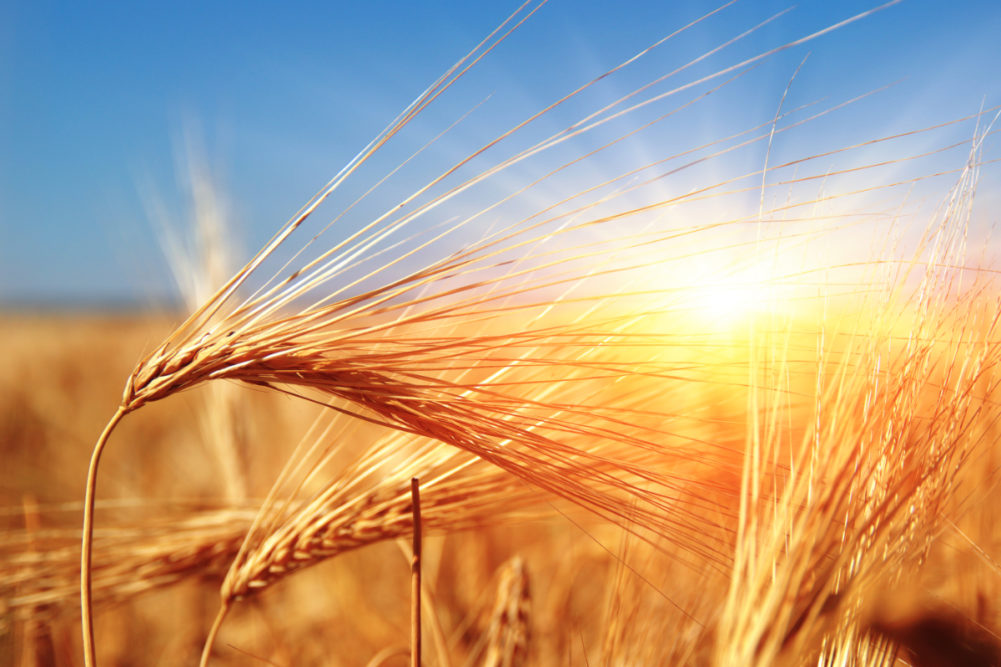KANSAS CITY, MISSOURI, US — Ideal weather that had growers hustling through corn and soybean harvests ahead of the normal pace also stoked fears the 2021 hard red winter wheat crop might not see sufficient pre-dormancy emergence and rooting.
“It is so dry out west, we haven’t had a measurable rain in south central Kansas, in the Wichita area, in over a month, since Sept. 11,” said Justin Gilpin, chief executive officer of Kansas Wheat. “It is dust-bowl-like conditions in eastern Colorado and southwest Kansas.
“If you think about soil profiles being a bank account of moisture, we’ve just really made a lot of withdrawals, drawing on that moisture and just haven’t made the deposits.”
Even if the biggest trouble areas of Kansas, Colorado and Nebraska received a plentiful soaking that allowed the crop to fully emerge prior to dormancy, experts said soil moisture levels were so depleted that several timely spring rains would be needed to carry the crop forward.
About 36% of US winter wheat production was within areas experiencing drought by mid-October, the US Department of Agriculture said in its weekly analysis of the US Drought Monitor. The most severe rating, exceptional drought, affected relatively small areas in eastern Colorado and the Texas panhandle. Surrounding those were massive areas characterized as extreme drought, a category also applied to parts of the Nebraska panhandle and a sliver of southwest Oklahoma. The rest of eastern Colorado and majority of Nebraska each were in moderate or severe drought.
Beginning in mid-September, US southern Plains growers witnessed more than four weeks of mostly sunny skies and infrequent rain sprinkles that amounted to nothing more than spots in the dust on the combine windshield. That opened a longer window of workable fall harvesting and wheat seeding days than any year in recent memory.
Even as dry weather allowed farmers to harvest corn and soybeans at a rapid pace, the lack of any beneficial precipitation was not far from the minds of growers planning to seed hard winter wheat for harvest in 2021.
But what of the old adage “plant in dust and the bins will bust”?
“When that phrase has come true, it’s because a crop’s been able to tap into existing subsoil supplies in that moisture bank account, which just doesn’t exist right now, unfortunately,” Gilpin said. “It’s that depletion of subsoil moisture that’s the growing concern for this wheat crop and why it’s going to take more than just one rain event to get the crop emerged and out of the ground.”
Subsoil moisture in Kansas was rated at 61% short to very short on Oct. 11 by the US Department of Agriculture. For Nebraska, the figure was 64%. Colorado’s subsoil moisture was a whopping 86% short to very short.
A fair amount of the 2021 hard winter wheat crop already was in the ground by Oct. 11, the USDA said. Sowing was 74% completed in Kansas (57% a year ago, 56% as the recent average) 69% in Oklahoma (66%, 62%), 55% in Texas (55%, 54%), 94% in Colorado (88%, 84%), 89% in Nebraska (93%, 90%), 88% in South Dakota (84%, 84%) and 66% in Montana (57%, 75%).
Hearty wheat seeds typically remain in good condition without deteriorating or rotting for a long time in dry soils, eventually germinating when the rain comes. However, seeds that get just enough moisture to germinate but not to emerge may see delayed emergence, typically exemplified by fewer fall tillers, or even plant death.
“It’s drought-tolerant, but it’s not drought-resistant,” Gilpin said. “Good emergence is always the concern going into the winter. You really want that crop to be emerged and rooted down and somewhat established so it can better weather winter conditions. Dryer soils create a crop more susceptible to a harsh winter and potential winterkill.”
Winter wheat emergence by Oct. 11 was 50% in Kansas (33% a year ago, 32% as the five-year average), 39% in Oklahoma (45%, 35%), 33% in Texas (36%, 30%), 56% in Colorado (59%, 55%), 60% in Nebraska (59%, 68%), 53% in South Dakota (61%, 54%) and 40% in Montana (22%, 46%).
An advantage to late seeding “is that it slows down the fall growth a little bit,” said Dave Green, executive vice president of the Wheat Quality Council. “When we plant early in the fall and have good growing conditions, that’s when we have problems with wheat streak mosaic and other diseases that are eliminated or lessened with late planting. So, it’s a little scarier to plant late, but it does provide some advantages to the crop overall.”
Still, “the closer you plant the seeds to rainfall is the optimum condition for sure,” Green said. “But a lot of agriculture is in the timing. Growers have the time to do it now, so this is the time to get it in the ground, and if we get rain, everybody will breathe a sigh of relief.”
There was nothing in forecasts late last week to indicate the long-term dry trend would soon subside. But some market participants were heartened at the prospect that extended fall dryness would be one of several factors expected to boost winter wheat acreage.
“Some years when we’ve had a wet fall harvest, a crop coming off late, we’ve lost some double-crop wheat acres,” Gilpin said. “But this open window really created an opportunity.”
Recent rallies in wheat futures were likely to increase seeding even as wheat competed with sorghum for acres. Sorghum prices this year have shot up due to export demand as the crop forms the basis of China’s national drink, the alcoholic baijiu. The potential for 2021 row crops also tipped the scales to wheat, Gilpin said.
“Farmers have a sense that they are setting up the crop in dry conditions, knowing that’s there’s not going to be that subsoil moisture for spring-planted row crops to tap into,” he said. “If there’s a year to go with more of a drought-tolerant crop like wheat, this might be it.”




